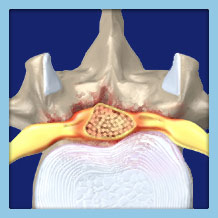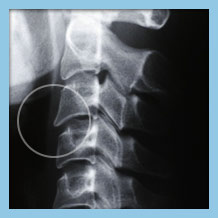

How Do I Know if I have Spinal Bone Spurs?
Spinal bone spur symptoms include pain that radiates along the nerve path into the arms or legs. Numbness, tingling, and a pins and needles sensation are also common symptoms of bone spurs in the lower back and neck. The longer the condition progresses, the more compression the spur will place on surrounding nerves, which may lead to muscular weakness and loss of motor function.
Do you have any of these symptoms and think you may be suffering from bone spurs in your lower back or neck? We have a quick and easy tool to help gather some information from you to help us determine the problem and get you on the road to recovery.
What is the Right Treatment for Me?
Spinal bone spur treatment usually involves anti-inflammatory medication, rest, activity modification, and exercises to strengthen core muscles that provide support for your back. If needed, physical therapy will be added to the treatment plan. Bone spurs in the lower back symptoms can be effectively managed with these conservative treatments. Only once conservative treatments have been exhausted should surgery be considered.
OLSS provides a wide range of treatment options. Our doctors are experienced and well-trained in treating bone spurs in the lower back and neck, enabling us to perform many advanced treatments other practices are unable to offer.
The real question is: What treatment is best for your bone spurs in the neck or lower back? Use our Treatment Match tool to quickly get started in finding the right treatment for you.
Frequently Asked Questions About Spinal Bone Spurs
What are causes and risk factors for bone spurs?
A bone spur is a smooth, bony growth that forms over a long period. Many bone spurs—or osteophytes, as they’re formally known—cause no symptoms at all, and you may not know you have one until it shows up during a routine imaging study. Joint damage from osteoarthritis is the most common cause of bone spurs. As osteoarthritis breaks down the cartilage cushioning the ends of your bones, your body attempts to repair the loss by creating bone spurs near the damaged area. In general, the risk of bone spurs is higher in people who have arthritis.
What are symptoms of bone spurs?
You might not realize you have a bone spur until you get an X-ray to look for another condition. They only cause problems when they press on nerves, tendons, or other structures in your body. At this point, you might feel pain in the affected joint, stiffness when you try to bend or move, tingling in your arms or legs, muscle spasms, cramps, and bumps under your skin. Symptoms of bone spurs in the lower back can include pain and stiffness in that region.
How are bone spurs diagnosed?
During the physical exam, your doctor might feel around your joint to pinpoint your pain. Your doctor might also order X-rays or other imaging tests to view your joints and bones. Initial treatment is directed toward decreasing inflammation and avoiding reinjury when possible. A cold application can help if the location of the bone spur is accessible. You may also be subject to anti-inflammatory medications administered both orally and by local steroid injection depending on the location of the spur.
How are treatments for bone spurs in the neck?
Bone spurs in the neck treatment may involve physical therapy, medications, and in severe cases, surgery. Conservative treatments are typically tried first, such as anti-inflammatory medications, physical therapy, and activity modification. If these do not alleviate the symptoms, more advanced interventions like surgery may be considered.
